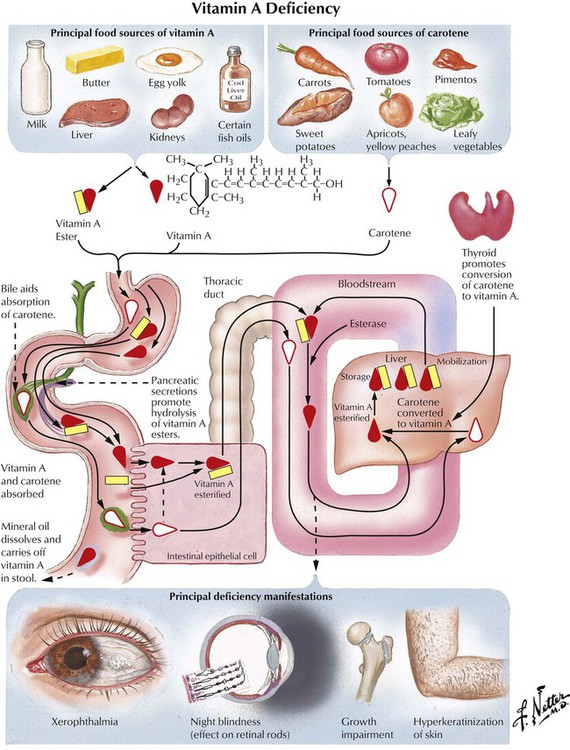Vitamins: Deficiencies and Drug Interactions
Overview

Dietary sources of the fat-soluble vitamin A include milk fat, eggs, green leafy or yellow vegetables, and fish oil. Vitamin A is formed from precursors (α, β, and γ carotenes) found in yellow pigments of fruits and vegetables (eg, apples, cabbage, cantaloupes, carrots, oranges, tomatoes). Diseases that result in malabsorption of fat or impaired storage of vitamin A in the liver are characterized by interference with growth, reduced resistance to infections, and disrupted epithelial cell structure and function. Principal manifestations of this deficiency include xerophthalmia (conjunctival dryness with epithelial keratinization), night blindness, and hyperkeratinization of skin. The main manifestations of other fat-soluble vitamin deficiencies include rickets (vitamin D), excessive steatorrhea (secretion of fat from sebaceous glands of skin; fatty stools) (vitamin E), and increased bleeding time (vitamin K). All these deficiencies are treated via supplementation.![]()
Stay updated, free articles. Join our Telegram channel

Full access? Get Clinical Tree


